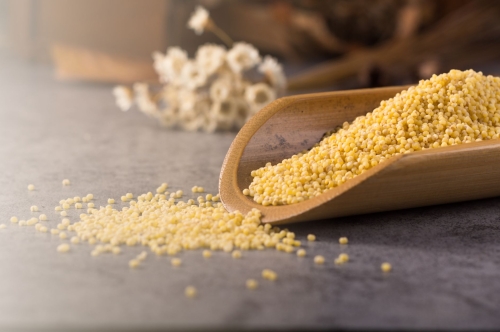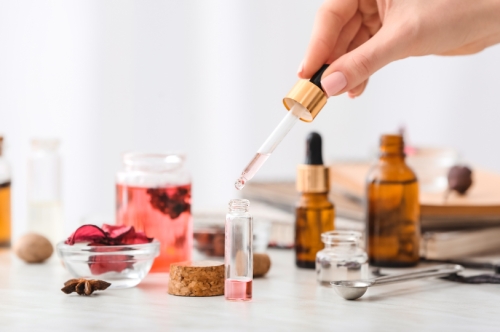Pharmaceutical Raw Materials: Wide Variety of Applications

A Brief Introduction to the Pharmaceutical Industry and the Raw Materials Used
The pharmaceutical industry plays a crucial role in our daily lives, providing us with the essential medications needed to treat and prevent illnesses. At the heart of this industry lies the use of pharmaceutical raw materials—substances that serve as the building blocks for a wide range of drugs and healthcare products. Understanding the types, applications, and significance of these raw materials is vital for anyone involved in healthcare, manufacturing, or pharmaceutical research.
What Are Pharmaceutical Raw Materials?
Pharmaceutical raw materials are substances used in the manufacturing of medicines and pharmaceutical products. These materials can be derived from natural sources or synthesized chemically. They include everything from active pharmaceutical ingredients (APIs) to excipients, solvents, and specialized additives like flavors and colorants.
Key Categories of Pharmaceutical Raw Materials:
- Active Pharmaceutical Ingredients (APIs): The core components responsible for the therapeutic effects of medicines.
- Excipients: Inactive substances that aid in drug formulation, stability, and delivery.
- Solvents: Liquids used to dissolve or process other ingredients during manufacturing.
- Disintegrants: Agents that help tablets and capsules break down in the digestive tract.
- Binders: Substances that hold tablet or capsule ingredients together.
- Lubricants: Prevent sticking during tablet and capsule production.
- Coatings: Protect tablets/capsules and control drug release.
- Colourants: Add color for identification and differentiation.
- Preservatives: Prevent microbial growth and spoilage.
- Antioxidants: Protect APIs from oxidation and degradation.
For a comprehensive overview of the raw materials and ingredients available, visit our Our Products page.
Types of Pharmaceutical Raw Materials: In-Depth
1. Active Pharmaceutical Ingredients (APIs)
APIs are the biologically active components in medications. They are responsible for the intended therapeutic effect and are subject to rigorous quality control and regulatory standards. For example, paracetamol is the API in many pain relief medicines.
2. Excipients
Excipients are non-active ingredients that improve the stability, taste, texture, and delivery of medicines. Common excipients include lactose, microcrystalline cellulose, and magnesium stearate. They play a crucial role in ensuring the safety and efficacy of pharmaceutical products.
3. Solvents
Solvents such as ethanol, water, and acetone are used to dissolve APIs and excipients during production. The choice of solvent can impact the purity and effectiveness of the final product.
4. Disintegrants, Binders, and Lubricants
These ingredients ensure that tablets and capsules are easy to swallow, break down efficiently in the body, and are manufactured without sticking to equipment.
5. Coatings and Colourants
Coatings protect drugs from environmental factors and can control the release rate of the medication. Colourants help in product identification and can improve patient compliance.
6. Preservatives and Antioxidants
Preservatives like parabens and antioxidants such as ascorbic acid extend the shelf life of medicines by preventing microbial growth and chemical degradation.
Expert Insight: According to the Indian Drug Manufacturers’ Association, over 70% of pharmaceutical formulations require a combination of these raw materials to meet regulatory and therapeutic standards.
The Role of Flavours in Pharmaceutical Raw Materials
Many pharmaceutical products have inherently unpleasant tastes or odors due to their chemical composition. This can lead to poor patient compliance, especially among children and the elderly. To address this, manufacturers use specialized flavours as pharmaceutical raw materials to mask bitterness and improve palatability.
How Flavours Are Used:
- Added to syrups, chewable tablets, lozenges, and oral suspensions.
- Enhance the sensory experience, making medicines more acceptable.
- Improve patient adherence to prescribed treatments.
Explore our Food Flavour Manufacturers | Best Flavours for Food page to discover a wide range of pharmaceutical-grade flavours designed for optimal taste masking and patient satisfaction.
Example: Norex’s Blue Raspberry SD flavour is specifically formulated to enhance the taste and efficacy of pharmaceutical products, making it a preferred choice for pediatric and OTC medicines.
Applications of Pharmaceutical Raw Materials
Pharmaceutical raw materials are foundational to every stage of drug development and manufacturing. Their applications include:
- API Production: The synthesis or extraction of the active ingredient.
- Drug Formulation: Combining APIs with excipients to create tablets, capsules, injections, creams, and more.
- Quality Control: Ensuring raw materials meet stringent purity and safety standards.
- Research & Development: Testing new compounds and formulations for safety and efficacy.
- Clinical Trials: Producing trial batches for human testing.
Did You Know? India is among the top global producers of pharmaceutical raw materials, with major hubs in Hyderabad, Mumbai, Ahmedabad, Vadodara, and Delhi. For more on our international reach and manufacturing excellence, see our Global Footprints page.
Mint & Menthol: Essential Raw Materials in Pharma
Mint and menthol are widely used in pharmaceuticals for their therapeutic and sensory properties. Menthol, derived from peppermint oil, provides a cooling sensation and is used in topical analgesics, cough syrups, and throat lozenges. Mint is valued for its refreshing flavor and is a staple in oral care products.
Key Applications:
- Analgesics: Used in pain relief creams, gels, and patches for their numbing effect.
- Respiratory Medications: Menthol acts as a natural decongestant in cough syrups and inhalers.
- Oral Care: Mint flavors are essential in toothpaste, mouthwash, and breath fresheners.
- Digestive Aids: Mint helps alleviate bloating and indigestion.
Discover our full range of Mint Products For Refreshing & Pure Mint Experience, ideal for pharmaceutical, oral care, and wellness applications.
Quality Control and Certifications in Pharmaceutical Raw Materials
Ensuring the quality and safety of pharmaceutical raw materials is non-negotiable. Manufacturers must adhere to international standards such as GMP (Good Manufacturing Practices) and obtain certifications from recognized bodies.
At Norex, our Quality Control department operates independently to guarantee that only the best materials reach our clients. We are proud to hold multiple Certifications that reflect our commitment to excellence and compliance.
Sustainability and Innovation in Raw Material Sourcing
The pharmaceutical industry is increasingly focused on sustainable sourcing and eco-friendly production methods. Norex is committed to Sustainability, supporting local farmers and implementing green practices in the cultivation of mint and other botanicals.
Frequently Asked Questions (FAQs)
What is API in pharmaceutical raw materials?
API stands for Active Pharmaceutical Ingredient. It is the component in a pharmaceutical drug that produces the intended therapeutic effect.
What are the sources of pharmaceutical raw materials?
Raw materials can be sourced from plants, animals, minerals, or synthesized chemically in laboratories.
Where are pharmaceutical raw materials manufactured in India?
Major hubs include Hyderabad, Mumbai, Ahmedabad, Vadodara, and Delhi, with many smaller manufacturers across the country.
What are the primary raw materials required for the pharmaceutical industry?
APIs, excipients, solvents, and packaging materials are the main categories.
How do flavours improve pharmaceutical products?
Flavours mask unpleasant tastes and odors, improving patient compliance and making medicines more palatable. For specialized solutions, see our Flavours Category.
What role do aroma chemicals play in pharmaceuticals?
Aroma chemicals are used to enhance the sensory profile of medicines, making them more appealing. Learn more about our Aroma Chemicals Manufactures and Suppliers.
Are natural fragrances used in pharmaceutical products?
Yes, natural fragrances are used in topical and oral care products to improve user experience. Explore our Fragrance Manufactures | World Class Fragrances for more information.
How does Norex ensure the quality of its pharmaceutical raw materials?
Our Quality Control team conducts rigorous testing and adheres to international standards to ensure product safety and efficacy.
Conclusion: The Future of Pharmaceutical Raw Materials
The pharmaceutical industry’s reliance on high-quality raw materials is only set to grow as new therapies and drug delivery systems emerge. By focusing on innovation, sustainability, and stringent quality control, manufacturers like Norex are shaping the future of healthcare.
For more information or to discuss your pharmaceutical raw material needs, contact our team today.












